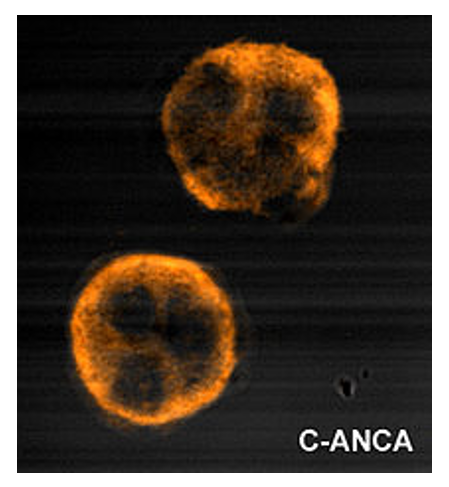Playlist
Show Playlist
Hide Playlist
Eosinophilic Granulomatosis with Polyangiitis: Diagnosis and Management
-
Slides Vasculitis.pdf
-
Reference List Rheumatology.pdf
-
Download Lecture Overview
00:00 Alright, so it's a 37-year-old woman. It turns out that that's important as well. EGPA is more common in folks who are ages 30-40 typically with antecedent symptoms of asthma for 10 or 20 years before that. In contrast, among the other ANCA-associated vasculitides like MPA and GPA, those tend to occur more often in the elderly populations. Next up, again, the asthma at age 19 with multiple exacerbations of increasing frequency over the past several years, that is a classic presentation for EGPA as well. In fact, it's kind of a sine qua non for EGPA. 90% of patients with EGPA will have had a history of asthma starting in the early 20's with some atopy and allergic rhinitis and one of the important clues for this is that their asthma has stopped responding well to inhaled corticosteroids. These episodes of abdominal pain after eating large meals, so prandial abdominal pain, I definitely want you to be thinking about the possibility of mesenteric ischemia. About 60% of patients with EGPA will have abdominal pain presumably due to constriction of the mesenteric vessels. You may also find guaiac positive stool or overt GI bleeding. We mentioned before that this left foot drop could be important and may be a harbinger of mononeuritis multiplex. The fevers and 15-pound weight loss, that's common with all of the ANCA-associated vasculitides that is kind of systemic involvement and the fact that this person is occasionally using crack cocaine, it turns out to also be relevant. It is a risk factor for ANCA-associated vasculitis and it's believed that one of the main factors is a filler that's often found in crack cocaine called levamisole, which you may have heard about in the past. Looking back at our physical exam again, nasal polyps, an indication of chronic rhinosinusitis, is something that we're going to see with EGPA as well. The focal crackles; the right upper lung fields; dullness to percussion, not unusual to find; some pulmonary manifestations and EGPA. And of course, the strength further supporting this idea of a mononeuritis multiplex, which we'll find in about 3/4 of folks with EGPA. The skin findings, subcutaneous nodules, erythema, palpable purpura, you're going to find a leukocytoclastic vasculitis with eosinophilic infiltration. 02:21 Again, that's distinguishing it from MPA or GPA. Alright, so, having made our diagnosis let's just talk briefly about how to manage patients with ANCA-associated vasculitides. The good news is that the treatment of all of them is essentially the same. You're going to admit this person, there's a lot going on. You're going to start them on IV corticosteroids and you're going to consider the use of cyclophosphamide or perhaps rituximab, you're really going to leave that up to the discretion of a rheumatologist because there are a number of different factors you may way in favor or against starting those medications. Ultimately, after a few weeks or months, you're going to want to transition to a steroid-sparing agent like azathioprine or methotrexate.
About the Lecture
The lecture Eosinophilic Granulomatosis with Polyangiitis: Diagnosis and Management by Stephen Holt, MD, MS is from the course Vasculitides.
Included Quiz Questions
Which of the following biopsy findings is most consistent with eosinophilic granulomatosis with polyangiitis (Churg-Strauss syndrome)?
- Granulomatous, leukocytoclastic vasculitis with abundant eosinophils
- Transmural necrotizing inflammation of small-sized arteries
- Lymphocytic infiltration with acid-fast bacilli
- Granulomatous inflammation of large-sized arteries
- Thickened, concentric smooth muscle cells around the vessels
Which of the following medications is NOT used for the treatment of eosinophilic granulomatosis with polyangiitis (Churg-Strauss syndrome)?
- Interferon gamma
- Steroids
- Methotrexate
- Azathioprine
- Cyclophosphamide
Customer reviews
5,0 of 5 stars
| 5 Stars |
|
1 |
| 4 Stars |
|
0 |
| 3 Stars |
|
0 |
| 2 Stars |
|
0 |
| 1 Star |
|
0 |
I like the breakdown and explanation of the case. I especially like the discussion of the management which wasn't covered in other lectures.




